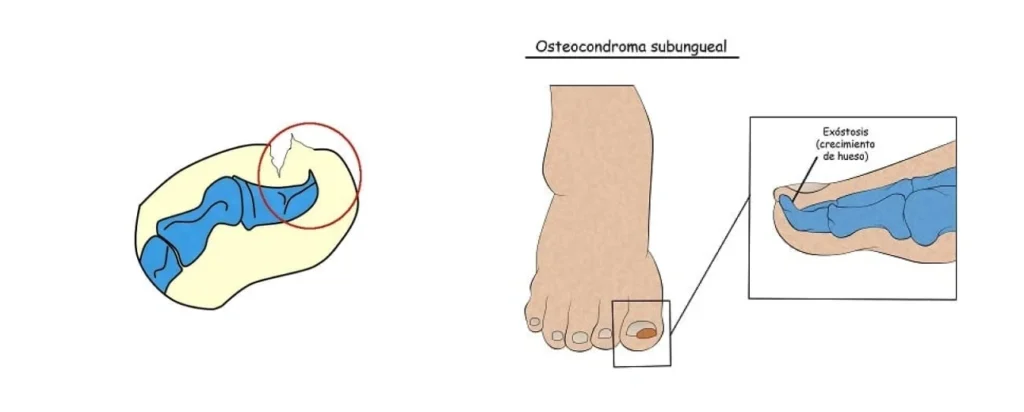
Request
for an appointment
What is subungual osteochondroma?
Subungual osteochondroma is a benign exostosis (bone growth) that occurs on the dorsum of the last phalanx of the fingers, pressing on the nail growth zone and causing pain.
What causes subungual osteochondroma?
Subungual osteochondroma is usually due to previous trauma or anatomical alterations of the finger that lead to a hyperextension position (finger raised at the tip) and the development of a subungual osteochondroma.
Symptoms
Due to its slow development, the symptoms of subungual osteochondroma have not been clearly recognized, so if radiological examinations are not performed, it can go unnoticed.
It is sometimes found because in addition to the nails falling off and becoming deformed, it can also cause pain due to pressure on the fingertips.
Treatment of subungual osteochondroma
The treatment of subungual osteochondroma can only be removed by surgery without damaging the nail. This operation is performed under local anesthesia and a small incision is made at the end of the finger, about 3 mm with minimally invasive surgery techniques, without requiring hospitalization and leaving on their own feet at the end of surgery.
The following are some of the differences subungual exostosis is a pathology that is often confused.
Subungual exostosis
– Benign bone proliferation
– It may appear from the 2nd and 3rd decade of life.
– Located at the end of the first distal phalanx.
– It is indistinguishable from bone and grows eccentrically until it reaches the bone.
– The size is smaller.
– Caused by acute trauma or repetitive microtrauma.
– Pain on pressure, subungual helomas, deformation of the nail plate.
– Beak-shaped.
– It is only visible in the lateral radiograph of the finger.
– Not malignant type
Subungual Osteochondroma
– Benign bone tumor.
– Covered by cartilaginous tissue.
– It appears between the ages of 10 and 25 (the age at which bones grow).
– Located in the growth metaphysis of the first distal phalanx.
– Unlike bones, it can grow inside bones or grow eccentrically.
– Larger size.
– Caused by bone growth disorders.
– Periosteal differentiation
– Perforation of the nail bed and deformation of the nail plate.
-Visible on anteroposterior and lateral radiograph of the finger
– May be malignant type

The best care in foot surgery and podiatry
Clínica San Román combines experience with the latest technology to offer you the highest quality treatments in podiatry and foot surgery.
